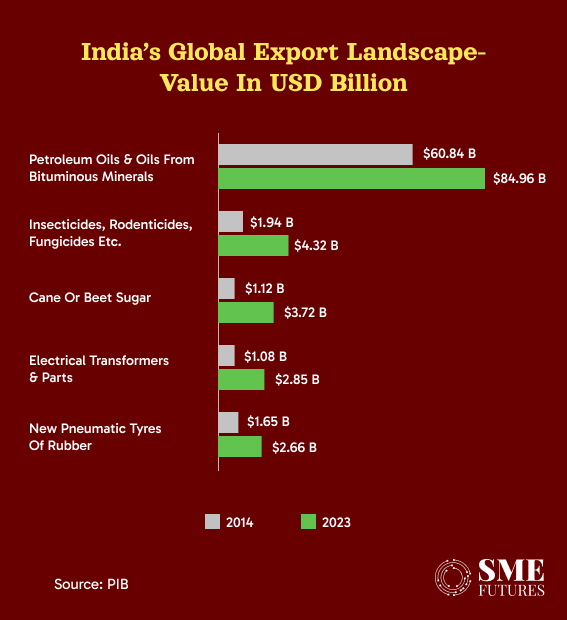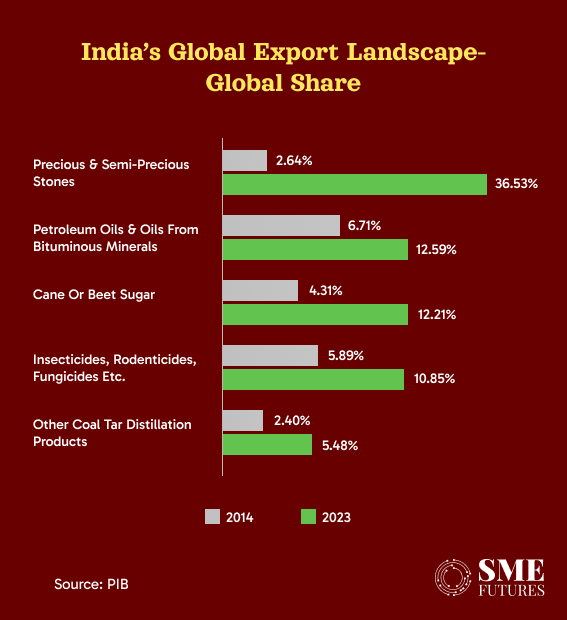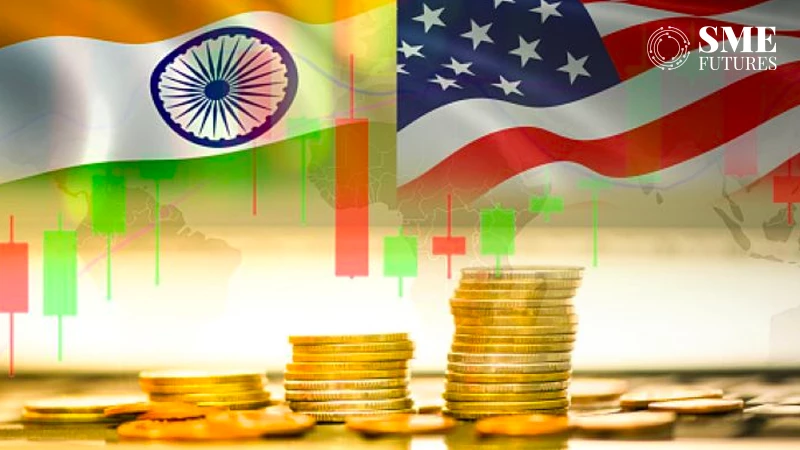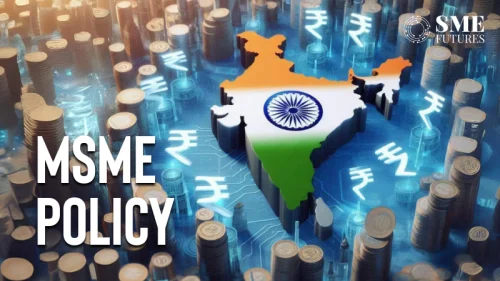India’s journey to becoming a global economic leader is driven by its stellar export growth. From petrochemicals to semiconductors and gemstones, the nation’s trade strategy is transforming its global standing. Thanks to government-backed initiatives and a sharp focus on innovation, India is climbing the ranks as a trusted supplier across multiple industries.
But what does this mean for India’s economy? Let’s break it down.
Oiling the growth engine
India’s export of Petroleum Oils and Oils Obtained from Bituminous Minerals hit $84.96 billion in 2023, a jump from $60.84 billion in 2014. With a global market share of 12.59 per cent, India now stands as the second-largest exporter in this category.
This growth isn’t accidental—it’s powered by state-of-the-art refineries, expanded production capacity, and adherence to stringent international standards. In a world hungry for energy security, India has emerged as a reliable player.
Powering agriculture with chemicals
The agrochemical industry is another feather in India’s export cap. By 2023, exports of insecticides, fungicides, and rodenticides reached $4.32 billion, doubling its global market share to 10.85 per cent since 2014. This surge positions India as the third-largest exporter of agrochemicals globally.
What’s the secret sauce? Investment in R&D and compliance with global agricultural norms. With sustainable farming becoming a global necessity, India is providing the tools to feed the world.
Sweetening the deal
India’s sugar exports have hit an all-time high. The country now supplies 12.21 per cent of the global market for cane or beet sugar, up from just 4.31 per cent in 2014. Export values stood at $3.72 billion in 2023, making India the second-largest exporter in this category.
Favorable government policies and robust agricultural practices have fueled this growth, especially in markets across Southeast Asia and Africa.
Manufacturing excellence in electronics
Electronics manufacturing is witnessing a renaissance in India. Exports of electrical transformers and components rose from $1.08 billion in 2014 to $2.85 billion in 2023, boosting India’s global rank from 17th to 10th.
Key initiatives like “Make in India” and Production-Linked Incentive (PLI) schemes have created a thriving ecosystem for manufacturing and innovation. It’s a step closer to India becoming a global hub for electronics.

Tyres and valves: Rolling into global markets
India’s rubber pneumatic tyre exports reached $2.66 billion in 2023, capturing a 3.31% share of the global market and moving up to the 8th position from 14th in 2014. Similarly, exports of industrial taps and valves rose to $2.12 billion, placing India in the 10th spot globally.
The formula? Advanced manufacturing techniques, competitive pricing, and adherence to global quality standards.
A gem of a sector
India has become the global leader in precious and semi-precious stones, commanding a whopping 36.53 per cent share of the global market. Exports hit $1.52 billion in 2023. This achievement reflects a unique blend of traditional craftsmanship and cutting-edge technology.
It’s a testament to India’s ability to blend heritage with modernity to dominate niche markets.

The semiconductor push
India’s semiconductor exports rose dramatically, from $0.23 billion in 2014 to $1.91 billion in 2023. This 700% growth has elevated the country to the 9th spot globally, up from 20th in less than a decade.
With the global chip shortage highlighting the need for diversified supply chains, India is stepping up as a key player, aided by initiatives aimed at fostering domestic manufacturing.
All this growth is underpinned by forward-looking government policies:
- New Foreign Trade Policy (FTP):
Launched in 2023, the policy focuses on incentives, ease of doing business, and emerging sectors like e-commerce and high-end technology. - Production-Linked Incentive (PLI) Schemes:
Covering 14 sectors, these schemes with an outlay of Rs. 1.97 lakh crore have boosted manufacturing and exports. - Districts as Export Hubs:
This initiative taps into local talent, addressing bottlenecks and promoting employment. - E-Commerce Export Hubs (ECEH):
Aiming to achieve $100 billion in cross-border e-commerce exports by 2030, these hubs are connecting MSMEs and artisans to global markets. - Trade Infrastructure for Export Scheme (TIES):
Focused on building world-class infrastructure to reduce logistics costs and enhance efficiency.
Eye on 2047
India’s ultimate goal? Becoming a global economic powerhouse by 2047. Here’s how it’s paving the way:
- Global Innovation Index: India climbed from 81st in 2015 to 40th in 2023.
- Doing Business Rankings: Improved from 142nd in 2014 to 63rd in 2019.
- Patent Boom: From 5,978 patents in 2014 to 103,057 in 2023.
With its sights set on global competitiveness, India is gearing up for its next big leap.
India’s export journey is a story of resilience, innovation, and strategic policymaking. By harnessing its diverse strengths—from petrochemicals and agrochemicals to semiconductors and precious stones—India is reshaping its role in global trade.
As the country builds on these achievements, its vision of becoming a global economic giant by 2047 seems not just ambitious but entirely achievable.











